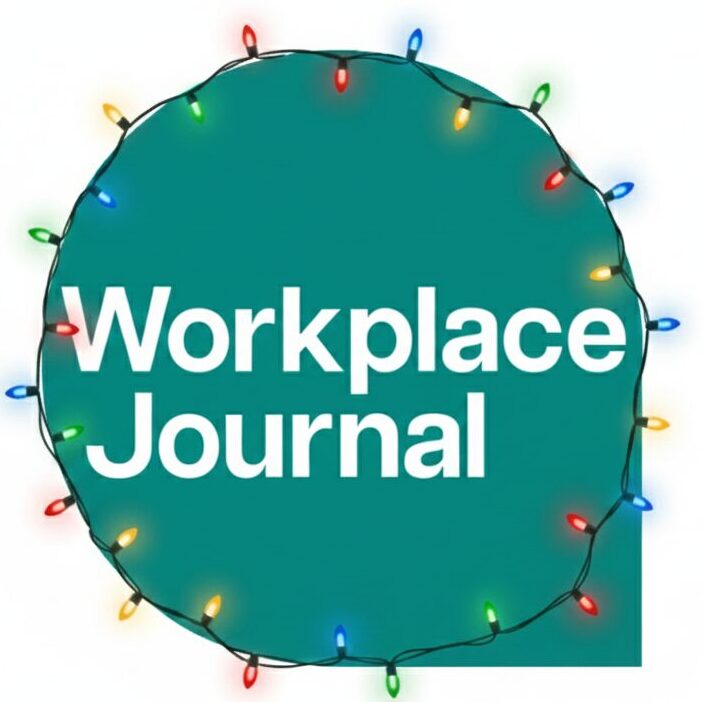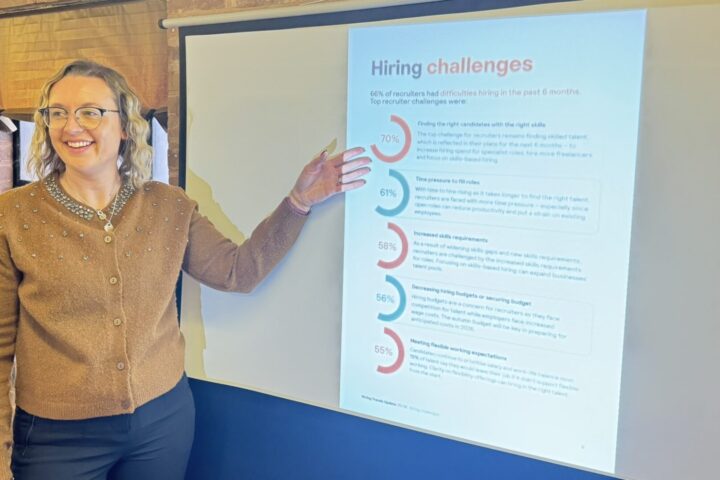The latest ONS labour market data showed the employment rate for people aged 16 to 64 was 74.8% between September and November 2024, unchanged from a year ago but slightly lower than the previous quarter.
The unemployment rate was 4.4%, higher than a year ago and up on the last quarter.
The economic inactivity rate for people aged 16 to 64 was 21.6%, down from estimates a year ago and lower than the latest quarter.
Estimates for payrolled employees decreased by 32,000 (0.1%) between October and November 2024 but rose by 95,000 (0.3%) between November 2023 and November 2024.
The early estimate for December 2024 showed a decrease of 47,000 (0.2%) on the month and 8,000 (0.0%) on the year, with the total number of payrolled employees estimated at 30.3 million.
The number of job vacancies in the UK decreased by 24,000 on the quarter to 812,000 between October and December 2024.
This was the 30th consecutive quarterly decrease in vacancies, though the number remains above pre-pandemic levels.
Workforce jobs data showed continued moderation of annual growth in employment.
Annual growth in employees’ average earnings in Great Britain for both regular pay (excluding bonuses) and total pay (including bonuses) was 5.6% between September and November 2024.
When adjusted for inflation using the Consumer Prices Index including owner-occupiers’ housing costs (CPIH), real-term growth was 2.5% for regular pay and 2.4% for total pay.
In November 2024, 51,000 working days were lost due to labour disputes across the UK.
Demographic insights showed that the unemployment rate for young people aged 16 to 24 was higher than the overall average.
Employment rates for older workers aged 50 to 64 saw a slight increase.
Gender-specific data indicated that employment rates for men reached 78%, while the rate for women was 71.8%.
Economic inactivity among women was 25%, compared to 18.1% for men.
Reaction:
Michael Stull, director at ManpowerGroup UK:
“After five years including a two-year period of record highs, job openings have almost dropped below pre-pandemic levels.
“Of course we’d like to see these levels plateau alongside the unemployment rate which has risen slightly by 0.1% this month but unfortunately we haven’t seen the full impact of employers cutting down costs yet.
“Employer National Insurance increases and threshold changes won’t come into effect until April meaning it’s probable the UK’s hiring recession is going to continue for some time yet.
“That said, pay growth is improving while inactivity has decreased slightly again, which is to be welcomed.
“Over the medium-term businesses will need to invest in boosting skills and productivity by adapting to the new realities of the market.
“We can’t fully rely on the ONS labour market data as we have done before because of work underway to address its accuracy.
“This makes how the Bank of England reacts to the labour market much less predictable each month and it emphasises the need to closely monitor multiple data sources for signs of employment trends.
“In a welcome sign of possible green shoots, ManpowerGroup’s 2025 Global Talent Shortage Survey also published today, suggests the UK skills gap may have peaked – at least for the time being.
“While the reduction is undoubtedly welcome, most organisations will need to keep working extra hard to continue closing the skills gap.
“The UK’s skills shortfall is higher than the global average (reported by 76% vs 74% of employers respectively) and where upskilling and recruiting is concerned, businesses will need to intensify the resilience they’ve displayed in recent times.
“This means some leaders may be inclined to take more risks this year in order to fire up the economy again, and those who can afford to do so will likely reap the rewards.”
Sarah Coles, head of personal finance at Hargreaves Lansdown:
“Wages outpaced inflation again, running hotter than they have for three and a half years.
“We’re enjoying a smidge of extra wiggle room in our budgets right now, but it could have a sting in the tail if it ends up fuelling higher inflation.
“Wages are rising faster than a month ago – and well ahead of inflation.
“Pay hasn’t put this much clear blue water between itself and inflation for around three and a half years, so the difference is palpable.
“It’s leaving us with more money at the end of the month: this week’s new HL Savings & Resilience Barometer puts this at an increasingly healthy average of £136 – rising to £726 among the highest fifth of earners.
“It’s a major reason why we’re saving more at the moment, and building our short-term resilience.
“Measures in the Budget should keep wages rising for a while longer, given the public sector wage rises and minimum wage hikes on the cards in April.
“However, while higher wages may be fuelling the feel-good factor right now, that feeling may not last.
“There’s always the risk that if wages keep running hot, it will mean higher inflation for longer, which will put pressure on the Bank of England to push rate cuts further down the road.
“On balance, the lack of growth in the economy, and a month of falling inflation, are likely to mean a rate cut in February is still on the cards.
“However, the Bank of England will be watching for any signs that higher wage bills will force employers to put their prices up.
“Meanwhile, not everyone is getting to enjoy the benefits of better pay, because unemployment is rising.
“Uncertainty around the Budget, and some of the bad news around rising taxes for employers, could be playing a part in keeping a lid on employment, which fell over the quarter.
“There’s also the fact that the good news on wages may end up being relatively short-lived.
“There’s a risk that businesses will be under pressure to cut costs in the face of higher employers’ National Insurance bills, so will cut back on both staff and wage rises as we go further into 2025.
“It means we may well need to call on our emergency savings funds.
“The HL Savings & Resilience Barometer has good news on that front, because the level of savings has grown over the past six months, and 65% of people have savings to cover at least three months’ worth of essential spending – the minimum recommended by advisers.
“For those sitting pretty on a decent pot of savings, it’s worth finding a rewarding home for them. At the moment, it’s still possible to make more than 4.5% on easy access savings from online banks and savings platforms.
“You work hard enough for your money, so your money should be working harder for you. For those with a shortfall, don’t panic, just put away whatever you can afford right now.
“You’ll be grateful for every penny if tougher times are around the corner.”
James Cockett, senior labour market economist for the CIPD:
“Today’s figures show high wage growth continues to be a mainstay in the economy.
“Pay growth has risen once again, driven by the private sector.
“Looking ahead, the pay growth picture remains difficult to predict as while the labour market is loosening, public sector pay rises towards the end of last year are yet to make their way through the system.
“Firms unable to absorb cost increases announced in the Budget may have no choice but to raise prices this year which is likely to have inflationary impacts and feed into ongoing wage growth.
“With vacancies falling and unemployment continuing to edge up even before the impact of the increases to employer National Insurance contributions have taken effect, 2025 is likely to be a challenging year for many job seekers.
“It’s crucial that the Government consults fully on measures to be introduced in the Employment Rights Bill to ensure they don’t reduce future job opportunities, particularly for young people and other candidates viewed as higher risk by employers.”
Catherine Foot, director of phoenix insights at Phoenix Group:
“Today’s figures show that while economic inactivity has edged down over the past year, it remains a persistent challenge.
“This is something we’ve seen particularly among over-50s.
“Too many people who could contribute to the workforce are still facing barriers to work, and without action, we risk undermining both economic growth and individuals’ long-term financial security.
“Encouragingly, wage growth continues but pay alone is not enough to support over 50s back into employment.
“People in this age category need greater flexibility, better job security, and support to balance work with health conditions and caring responsibilities.
“Our research shows that nearly two-thirds of over 50s believe flexible working would help them stay in work for longer.
“The decline in vacancies makes it even more important to ensure roles that are available are flexible.
“Government and businesses must work together to break down employment barriers – through more inclusive recruitment, paid carers’ leave, and tailored career guidance to help people retrain and stay in work for longer.
“The government’s Employment Rights Bill and Get Britain Working White Paper recommendations are positive steps, but further targeted action is needed to create a labour market that works for all ages.”
















